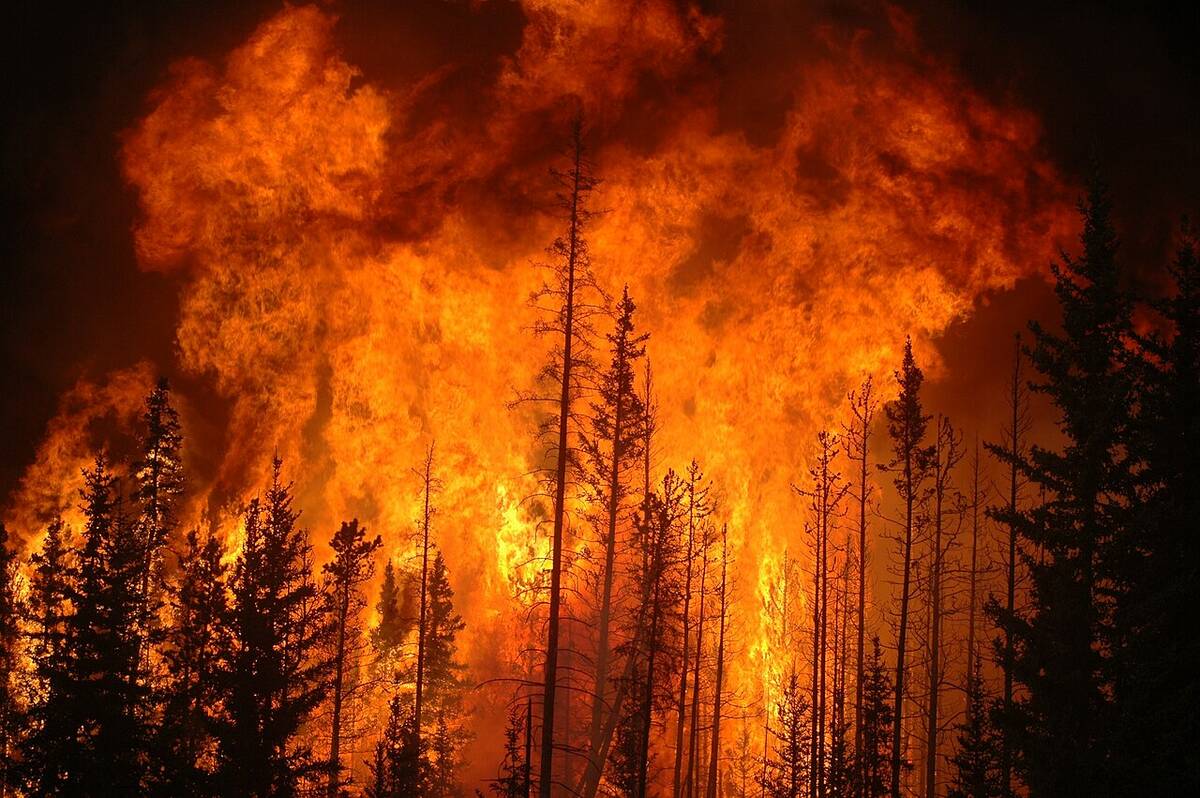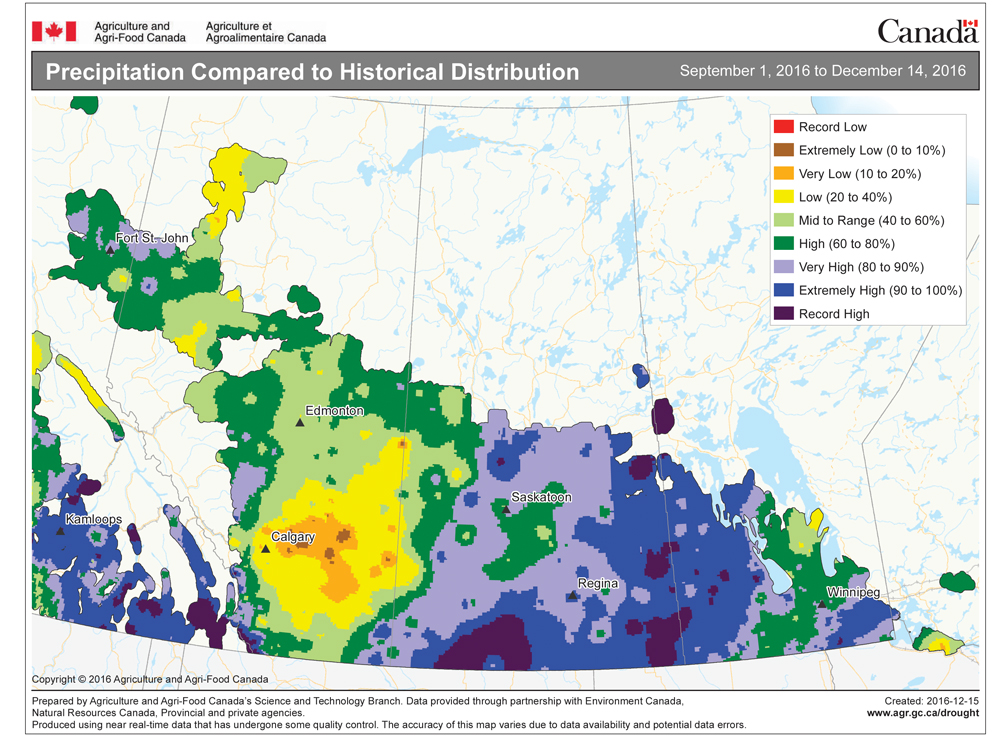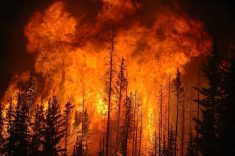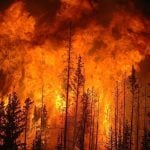Our nine days of brutally cold air have ended; that’s right, this little cold snap was only nine days long, but from what I was hearing, you’d think it was the entire month! The lobe of cold arctic air that brought the cold weather has finally weakened and moved off to the east, allowing the flow across our region to become more zonal (west to east). As a result, temperatures will be a fair bit warmer for the last two weeks of December.
For those of you wondering, last week’s Colorado low did develop, but the strong cold arctic high dominating our region kept it well to our south as predicted.
Read Also

YEAR IN REVIEW: 2025 a year of weather extremes
Wildfires, drought and flash floods, oh my! Looking back at the year’s headline-grabbing events in Canada and around the world.
To begin this forecast period, we will see Pacific high pressure slide by to our south. This will put us in a strong westerly flow on Wednesday and Thursday, keeping temperatures above average. Weak low pressure is then forecasted to track across central Manitoba on Friday. This will switch our winds to southerly and help to bring in very mild temperatures along with the chance of some light snow. Attention then turns to another Colorado low that is forecast to develop on Christmas Eve and track to our south over the next couple of days. Confidence in this system is low, but once again, it bears watching. If this system tracks far enough to the north, southern regions could see some significant snow on Christmas and Boxing Day.
Colder arctic air will move in behind this system to begin next week, but it looks like it will only last a couple of days before milder air moves back in. Overall, it looks like cold arctic air will be sitting over the northern Prairies to end the year, with warm air sitting to our south. A bit of a battle will then set up between the warm and cold arctic air. The weather models show a couple of storm systems travelling along this battlefront late next week and into the New Year. The current storm track is taking these systems through the north-central Prairies, but as usual, it is something to keep an eye on.
Usual temperature range for this period: Highs: -20 to -4 C; lows, -29 to -12 C.
















